Beautiful and bright flower beds on the plot are the joy and pride of any gardener, since it is precisely such gardening compositions that require the most close attention and care. To make one bed, you need to choose a suitable place and purchase flowers that the case itself is quite complicated. To date, there is simply a huge range of perennial and annual colors, which are important competently grouped to create a unique and long flowering garden composition.
Clarkia is one of the bright representatives of blooming crops, which is able to decorate on their own even the most unassuming household plot. Clarkia flowers are simply a great popular among the flower water, as the cultivation of this plant will not require special effort, time and costs.
In this article, we consider the Botanical description and features of Clarkia in more detail, we note the characteristics of popular species and varieties of this flower. We give important rules and nuances of planting and care for annual Clarki in the open ground.
Clarkia: Features and Botanical Description
Being in finding new and unusual colors for your flower bed, you should pay close attention to delicate Clarki. Looking at this bright flower, it is simply impossible to keep the sigh of admiration, since this is the usual flowering plant with a colorful spot always stands out in the garden, without demanding from the gardener of unosstal actions to grow.
Clarkia is an annual, flowering herbaceous plant, which refers to the family of Cylet or Outline. This genus of plants in its external signs is very similar to the genus of God. Until recently, these two plants belonged to various kinds, but some scientists and botany still unite Clarki and year old. It is important to take into account when buying seeds and seedlings of Clarkia, as you can buy instead of this year seedlings.
Clarki flowers are real overseas plants, as they arrived on the territory of Europe from the American continent. The natural area of \u200b\u200bhabitat of this plant is considered the Western Territory of North America, as well as Chile, where approximately 30 species of Clarkia are growing in the fields and meadows. From America, or rather from California, Clarkia brought the famous traveler Captain William Clark around the 19th century, in honor of which the flower was named. Very often because of this large resettlement Clarkia is called the "Californian marigold". Since then, the cultivation of Clarki began to engage throughout Europe. To date, this gentle flower conquers gardens and flower beds in regions with temperate climates. However, it is worth noting that only 3 are cultivated from all kinds of gardens.
Clarkia Description:
- Clarkia belongs to the same family of annual flowering plants, which are popular among gardeners and landscape designers.
- Small clouds lined in the garden create lush and air clouds of various bright colors against the background of green foliage, which allows this plant to be an independent decorative culture.
- Clarkia is an annual herbaceous plant, which grows most often in the form of a small busta.
- In the height, this flower can reach about 30-90 cm.
- The shrub is formed by a reprehensive and highly branching stems, which are rarely leaked to the side.
- Stems are thin, but elastic and dense, have a green-brown shade, which sometimes goes into red. Most of Clarki varieties have a slight omission on the surface of the stems in the form of small villings.
- By the fall, the lower part of the shoots trees.
- Over the entire length of shoots are seated leaves, which are located next.
- A sheet plate of oval shape, slightly elongated with a pointed top and a served edge. The surface of the plate is smooth and matte, sometimes a reddish alkali can come on it. The overall color of foliage is violent or saturated green.
- In the sinuses of Clarki leaves, floral buds are formed, which in about the middle or end of May begin to bloom.
- Clarkia flowers can be simple and terry, while they have the right form.
- The diameter of one flower can be as much as possible about 3-3.5 cm.
- In various species and varieties of Clarkia, flowers can be collected in accommodation or creeps-like top-shaped inflorescences. Clarki plants with single colors are less common.
- The flower consists of a tubular cup and a simple coin, which is 4 solid or three-bladed oblong petals that approve to the base. Sorts with terry flowers are much larger.
- Clarkia during flowering is striking the most bright colors. Petals depending on the variety can be painted in different shades - white, pink, smoky-pink, crimson, salmon, purple and others. During flowering, flowers exude a gentle and pleasant fragrance, which attracts insect pollinators.
- The flowering of this annual flower continues until autumn, so planting Clarki in its plot, you get a decorative culture throughout the season.
- After a complete flow of inflorescences on the plant, the fruits are begin to form and ripen fruits, which are a multi-seaman a small oblong form.
- Inside the box are small seeds of Clarki brown shade, whose germination is preserved for 3-4 years. In the wild, the plants multiply by self-sowed, since as the seed boxes are bursting, and the seeds are scattered around the district.
- Clarkia is considered an unpretentious plant whose cultivation in the open ground of a moderate climate is even a beginner flower.
Using Clarki in Landscape Design - Options
Clarkia is a very beautiful and bright flower, which will certainly like any flower flower that intends to make your site original and unique. Despite the small number of cultured species of Clarkia, with the help of this plant you can create a variety of garden compositions, including bushes in groups with other decorative plants. Consider the main applications of Clarkia in landscape design.
- Thanks to its decorativeness throughout the season, Clarkia will look great in solitary landings on the territory of the site.
- In addition, the colors of various varieties of Clarkia can land with groups by selecting them in color and height.
- Especially spectacularly Clarkia looks in combination with flowers such as asters and phlox.
- Many gardeners prefer to plant Clarki along the walls and fences, as well as in garden containers and on balconies.
- If you plant a few Klarki bushes nearby, you can successfully hide the gardens unpretentious sections.
- Clarki's bushes will become an excellent background for roses, it is also successfully harmonized with various coniferous cultures.
- Tall varieties of this plant can be planted separately and use them for cutting.
- It seems originally planting from Clarki flowers along the garden paths and borders.
As can be seen, the landing of Clarki in the open soil is accompanied by a competent approach and the inclusion of fantasy, which ultimately brings satisfaction from the beauty created by their own hands. Next, we give several photos of Clarkia in landscape design.
Clarkia types and varieties: general characteristics
As noted above, the genus Clarkia has about 30 different types of this plant, but only 3 varieties are cultivated in gardening, which are well tolerated by the moderate climate of Russia. Next, consider the characteristics of these types of Clarkia and popular varieties grown by gardeners.
Clarki Elegant or Nick
The natural habitat of this type of Clarki is considered the territory of California, from where it has spread throughout the world, especially in Europe and Russia. Clarkia is elegant is one of the most popular species of this flower. In the height, the bustice reaches about 100 cm, it is formed with high and flexible shoots, which differ in strong branching.
A distinctive feature of this species is the fact that the lower part of the annual for autumn begins to obeside. The shoots are evenly covered with oval oblong foliage with clearly distinguishable reddish veins. The surface of the leaf plate has a syrodo green shade. Clarki Flowering Elegant begins in approximately July and lasts until September. During this period, the plant decorate simple or terry flowers of different shade, which depends on the specific variety. The diameter of one flower is 3.5-4 cm.
Popular varieties of Clarki Elegant:
- Grand Clarki "Albatross". It is an herbaceous one-year medium-sized bush, the stalks of which can be as much as possible to reach 70-75 cm. All shoots are very branched, inflorescences consisting of terry snow-white colors are formed on their tops.
- Grade "Purpourcation". An herbal flowering plant with a height of 80-90 cm. In late spring or at the beginning of the summer, pleases the terry flowers of the carmine shade, which in diameter can reach 4 cm.
- Grand Clarki "Salmon Perfeksch". It is a sufficiently loose bush, which grows as much as possible to 90 cm. The flowers are terry, with a diameter of 3-4 cm, a bright pink-salmon shade.
Clarki Pretty
This species is a low herbaceous plant, which is formed by reprehensive and highly branching shoots. The height of Clarki's cocusa is a pretty on average is 35-40 cm. Stems thin and elastic, thick covered with leaves. Sheet plate is long and narrow, solid with a pointed top. Saturated green leaves. On the most tops of shoots in the sinuses of the leaves, flowers are blooming, which this type of Clarki can be both simple and terry.
Flowers can be single or collected several pieces in small inflorescence of a creeping or aqueous form. Petals in colors have a rather original form - they are evenly divided into three shares, for which this kind of people is called "Elk Horn". Clarki's bloom pretty begins two weeks earlier than Clarki elegant.
In addition to the data of the two types of Clarkia, gardeners began to plant clarkia, which is a low herbous bush up to 50 cm high. The diameter of the colors is approximately 3 cm. On the shape of the petal resemble butterflies. The most popular variety of this type of plant is considered to be "Pink Ribbons", which is pleased with light pink inflorescences.
Clarkia reproduction: the most common ways
Clarkia is famous for its unpretentiousness and inconspicuous to cultivation conditions, which is why gardeners are increasingly preferred in their choice of this flowering plant. Since Clarkia is an annual plant, only one method is available for reproduction - reproduction with seeds. Moreover, in the natural environment, species Clarkia multiply by self-sow. We present the most important rules and nuances of cultivation of Clarki from seeds.
Clarki seed reproduction with a reckless way
- Some gardeners simply lack time and effort to mess around with Clarkia seedlings, so they choose the seed seed option directly into the open ground.
- The best time for sowing seeds in the ground is the end of April or the beginning of May. Alternatively, you can soak Clarki under the winter in the fall so that the planting material passes the natural stratification.
- First of all, the selected gardening or flower bed must be carefully prepared. To do this, with the help of a shovel, it is good to reharge the soil and make peat and complex mineral fertilizers, you can use the superphosphate and potassium sulfate.
- It is worth remembering that the seeds of this plant are very small, so they are recommended to suck them with nests, i.e. 5-6 pieces together. At the same time, it is necessary to observe the distance between individual jacks, equal to about 25-35 cm.
- Due to the small size of the planting material, it is not necessary to plunge it, slightly press and sprinkle with a thin layer of sand.
- The first seedlings will appear in about 2-3 weeks. At this time, they should be slightly to proper, but it is not necessary to cherish it, as it is more spectacular during flowering and the thick bushes of Clarkia look more stronger.
Clarki seed reproduction ever
- If you want to get the blooming bushes of Clarki as soon as possible, then you should pay attention to a seaside method of reproduction of this plant. In this case, you will be much earlier to plant already grown seedlings and, therefore, young plants will bloom a little earlier.
- In addition, it is worth remembering that the seedlings obtained through seedlings will be much more hardened and resistant to cultivation conditions.
- Seeding seeds in seedlings are required in March, so Clarki's bloom can be expected in early June.
- First of all, each gardener should think about the preparation of capacity and nutritional soil. For sowing you can take both separate peat cups and large containers. Fill them definitely need a weakly acidic soil. Do not forget to moisten it well.
- After that, on the surface, make a shallow groove on the surface and drink seeds in them at a short distance from each other. Next, slightly press them with your hand or plank for better contact with the soil and moisten with a pulverizer.
- At the end, cover the glass container with glass and place it in a warm and bright room. The main thing is that the crops do not fall direct sunlight.
- When the first seedlings appear, the glass is removed. Be sure to keep picking and sear young plants.
Landing Clarki in Open Soil - Phased Description of the Process
Owning the main skills of growing annual blossoming plants, you can easily grow in your site, in your flower bed delicate and bright Clarki. To receive adults and the main thing blooming herbaceous bushes, it is enough to spend all the preparatory work, which are to choose a place for landing and acquiring high-quality seeds or young seedlings. We note the important characteristics of all stages of landing Clarkia in open ground.
Stage 1. The choice and purchase of the landing material Clarkia
- Before starting the landing, it is important to purchase high-quality landing material Clarkia.
- First of all, you must decide which planting material you need. You can just buy seeds, then sow into the ground or seedlings. However, today you can easily find and purchase already ready Clarki seedlings. For busy gardeners, the second option will be the most acceptable.
- You can buy seeds or Clarki seedlings in specialized garden shops or nurseries, where professionally engage in plants for sale. In such places you are guaranteed to get the goods you need and will additionally advise on the cultivation of this culture in the climate of your region.
- Also, do not forget to decide on the type and variety of Clarkia. Do not trust offers to buy unfamiliar species and varieties of this plant, except for those described above. In this case, you can get a completely different plant.
Stage 2. Choosing a place and soil preparation for landing Clarkia
- Also, special attention should be paid to the selection of places for landing Clarkia.
- Clarkia is not in vain considered an unpretentious plant. This culture grows perfectly on any plot. You will successfully get a beautiful and flowering plant on an outdoor sunny plot and in one-day, on a draft and close to large trees. The only condition, not to plant seedlings in a big shadow, otherwise the plants will stretch.
- Special attention should be paid to the selection of soil for planting. This plant prefers to grow on lungs and fertile soils with a weakly acidic reaction. If the hydrogen composition is not suitable, it is possible to make some peat or citric acid. With severe acidity, add some lime into the soil.
- Prepare the landing ground must be at least 2 weeks before the seedling landing. For this, the place is drunk, cleared by weeds and garbage. Be sure to make fertilizers, you can use mineral fertilizers.
Stage 3. Clarki landing process in open ground
- If you doubt when to plant Clarki into the ground, focus on the temperature of the soil and air. When the return freezers will be passed, you can land seedlings. This moment falls at about the end of May.
- At the prepared place in advance, make small wells at a distance of 25-40 cm from each other. At the same time, consider that if you land the Clarki of various varieties and species, the distance should be greater, as they can overpass.
- Seedlings in a container before landing should be abundantly pouring to facilitate her extraction.
- You need to get seedlings not one by one, but by groups. And in the same way, they are planted into the ground.
- Next to each group can be plugged with a thin stick so that in the future the stems of Clarki was a support.
- After planting, young bushes are plenty. Some gardeners are recommended for clarkia to stimulate a bunnie.
Clarkia Growing Agrotechnology: Secrets and Nuances of Care
Clarki's care is quite simple and understandable, the performance of the simplest action will not require the flower of excessive effort and costs, for which, ultimately, this plant is appreciated in the horticultural world.
- Watering. Clarkia is considered relatively resistant to the drought plant. If the summer was cool and with a sufficient amount of rain, then watering the plant is needed minimal. In more dry periods, it will be possible to water much more often, it is recommended to navigate to the top layer of the soil. If he is dried, you can wipe free. However, it is also not worth overdoing, since the root system can start rotting with an excess of moisture. When irrigated, it is important not to fall on the petals of blossomed flowers, as it can negatively affect their decorativeness.
- Loosening and mulching. After each watering, it is imperative to loosen the upper layer of the soil to ensure the inflow of oxygen to the root system. You need to do it very carefully, trying not to damage the roots. To reduce the number of weeds around the plant and reduce the frequency of loosens, the ground around Clarkia can be coated with mulch, which is perfect for peat or sawdust.
- Podchar. Clarkia care includes fertilizers, which contributes to active growth and abundant flowering of the plant. The feeding is especially relevant during the period of bootonization and flowering. It is at this time that at about once every two weeks it is necessary to carry complex mineral fertilizers under plants. You can also use fertilizers for flowering plants. Do not feed Clarki organic.
- Trimming. Experienced gardeners are recommended to comprise Clarki's shoots to achieve a 20-cm height plant. This contributes to greater bruises. It is also necessary to remove faded buds, leaving several to get seeds. So you retain the decorativeness of the bustle and extend flowering.
- Clarkia in winter. Before the onset of the cold, the upper part of the plant is cut under the root, and during the dumping the area is removed and the root part. Leave the plant on the site is not recommended not to risk the appearance of disease.
Gentle and bright Clarkia is a highly decorative annual plant, which will certainly decorate any plot and will replenish any flower collection of flowering plants.




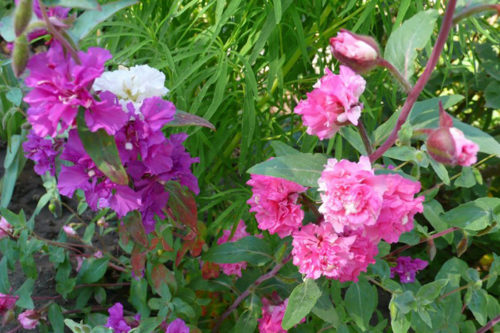
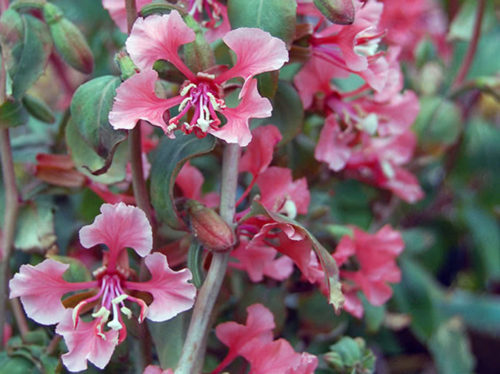
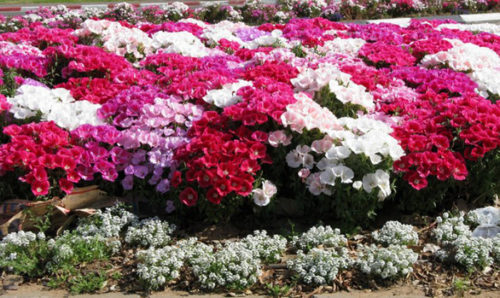
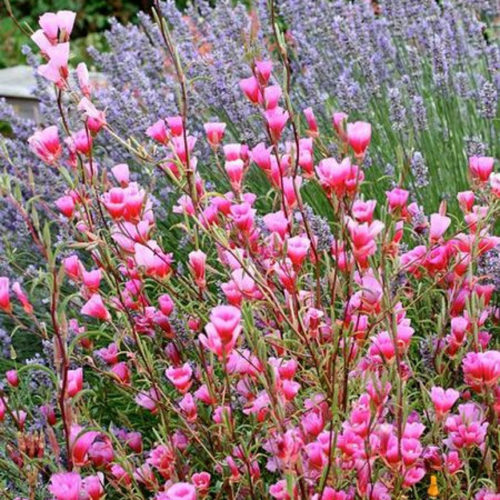
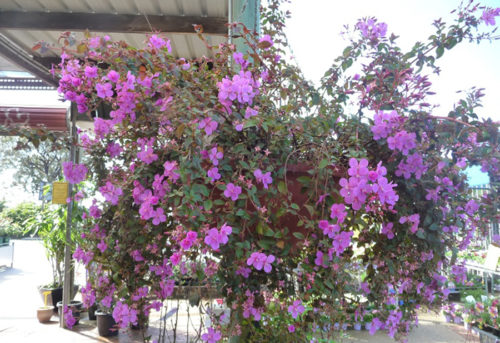
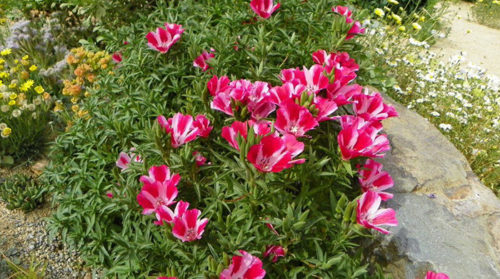
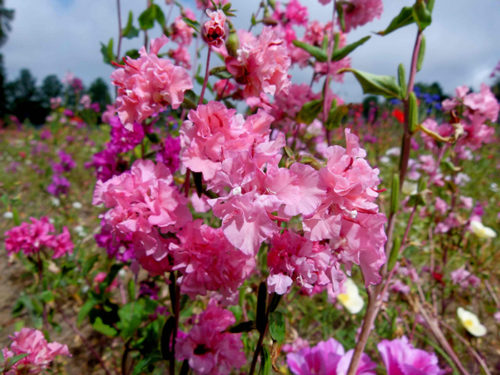
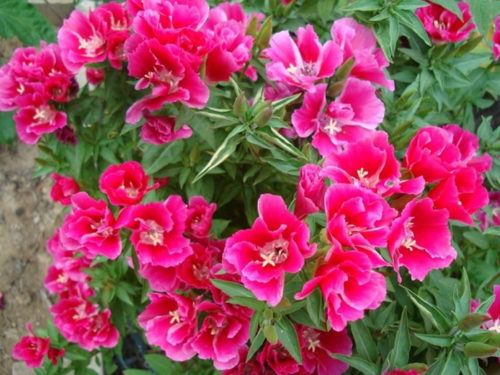
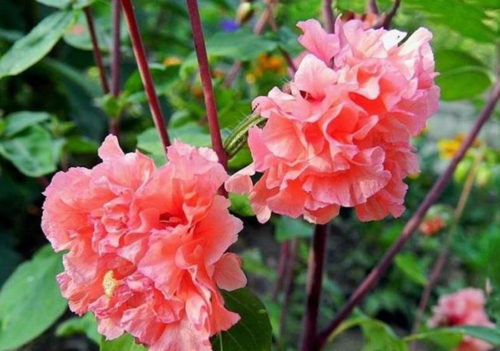
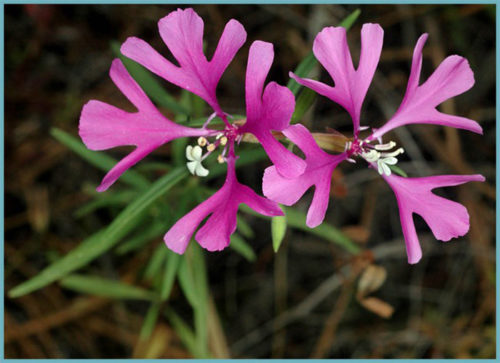
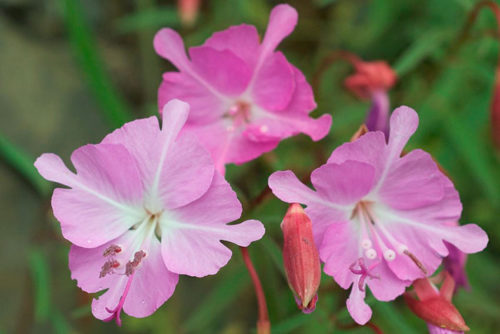
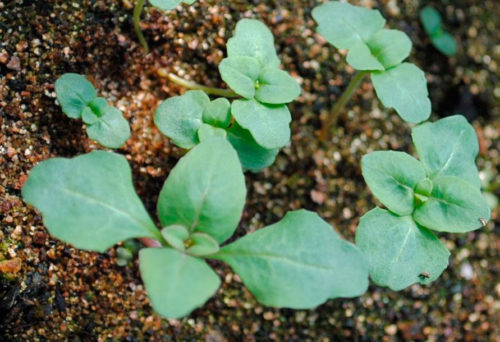

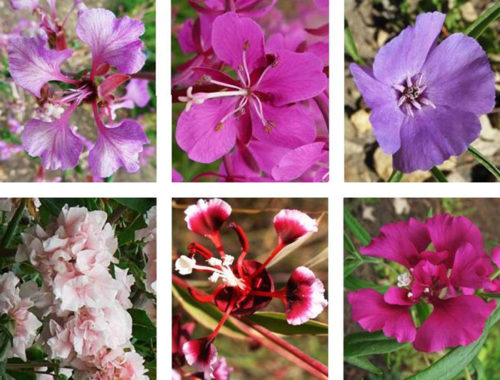
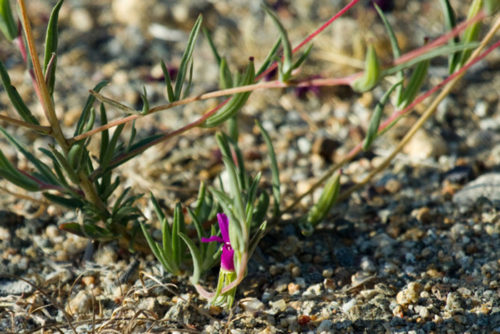













 Start a discussion ...
Start a discussion ...